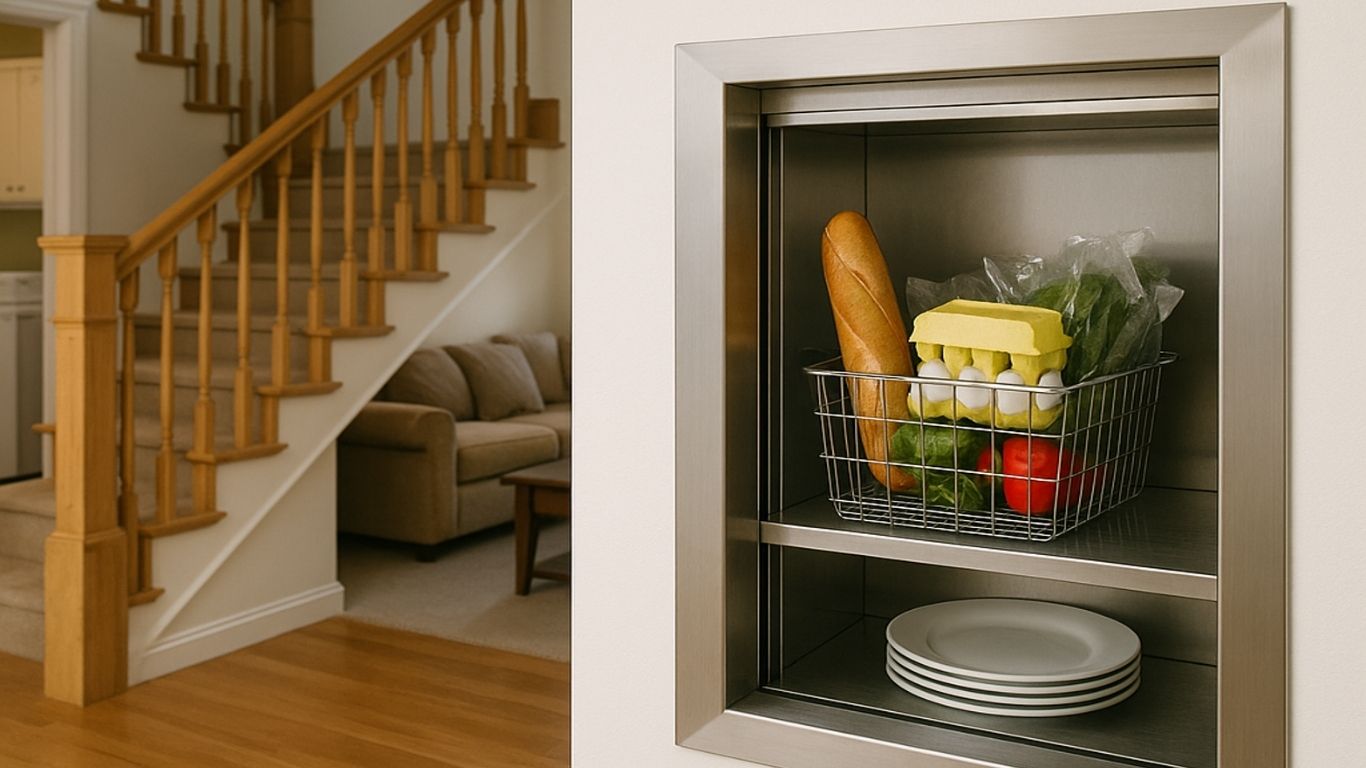
Is a Dumbwaiter Right for Your Home?
Modern homes are becoming smarter, more efficient, and increasingly vertical. But with multiple floors comes the age-old hassle of hauling groceries, laundry, or heavy items up and down staircases. That’s where a residential dumbwaiter can shine – quietly working behind the scenes to simplify life.
This article explores when a dumbwaiter makes sense in a home setting, how it works, and what to evaluate before committing.
Why Consider a Dumbwaiter at Home?
A dumbwaiter is essentially a small goods lift — not for people, but for transporting household items across floors. Think of it as a hidden conveyor between the basement, kitchen, bedrooms, or storage levels.
Key motivators for home installation include:
- Convenience & everyday ease
No more lugging heavy groceries or laundry baskets up multiple flights. A dumbwaiter handles the heavy lifting effortlessly. - Reduced risk of injury
Bending, carrying awkward loads on stairs — these all carry slip or strain risks. Using a lift reduces those hazards, especially for elderly or mobility-impaired users. - Improved flow in multi-story homes
As modern homes stretch vertically (e.g. split levels, mezzanines, service floors), moving goods between floors becomes more common — a dumbwaiter streamlines that. - Discreet luxury & added value
Beyond function, a smartly integrated dumbwaiter can be a premium feature that looks seamless and adds market appeal.
Space-saving alternative to full elevators
Because dumbwaiters carry items, not people, their shaft requirements and structural demands are much smaller.
When Does It Make Sense?
Here are situations where a home dumbwaiter may be especially beneficial:
- Your home has three or more floors and routine vertical transport (laundry, groceries, supplies) is frequent.
- You have a split layout – kitchen, pantry, laundry, or storage spread across vertical levels.
- Carrying heavy or delicate items upstairs is cumbersome or unsafe.
- You’re remodeling or constructing and can allocate a dedicated shaft or void.
- You aim to improve accessibility or age-in-place without relying solely on elevators.
That said, it may not be practical when floor layouts are tight, electrical access is limited, or structural changes become too expensive.
A residential dumbwaiter isn’t just a novelty — it can become an indispensable tool that streamlines daily tasks, enhances safety, and adds sophistication to a multi-level home. Especially in vertical homes or those with regular inter-floor traffic, its value becomes evident quickly.
At BKG Middle East, we engineer dumbwaiter systems suited to regional needs — from compact urban villas to luxury towers. If you’re considering adding one to your home, we’d be happy to assess your site, propose design options, and guide your installation. Let us help you decide whether a home dumbwaiter is right for you.
